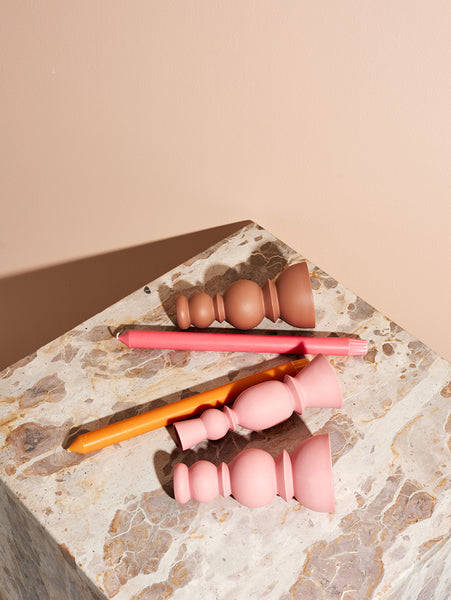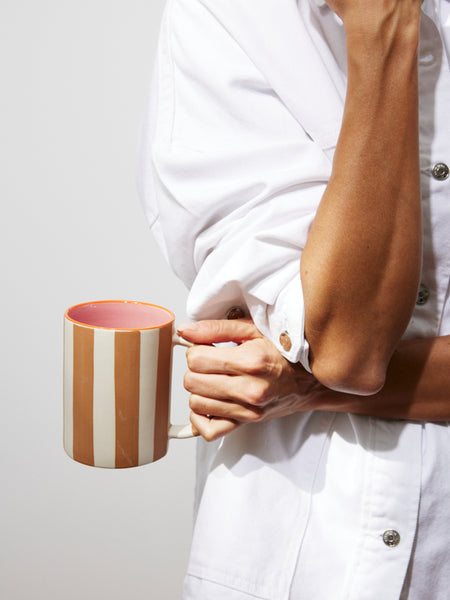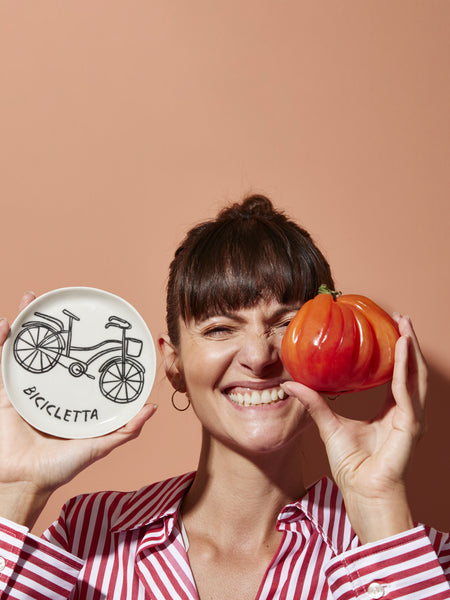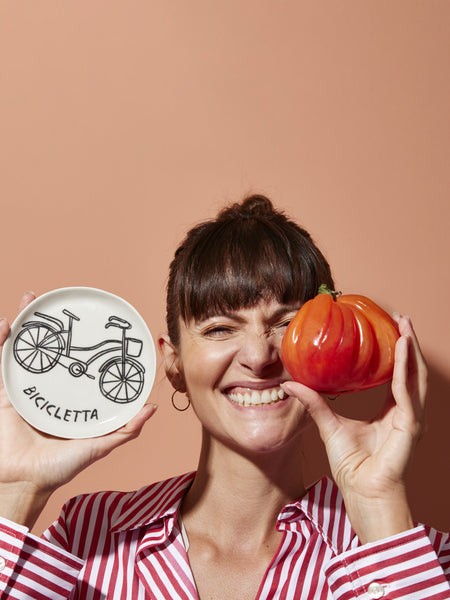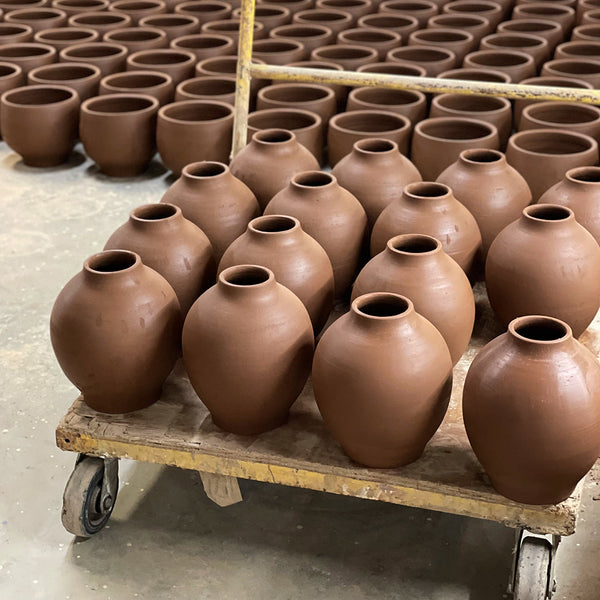What makes Jones & Co pottery so special?
Pottery is one of the oldest of the decorative arts that creates products from clay and hardens them with heat. Sounds simple right? But anyone that's done a pottery class will attest that it takes some mad skills to helm a potter's wheel. This is a medium so esteemed in history and culture that even its production is deliciously hypnotic and downright sexy (y'all are thinking of "Ghost" right now, aren't you!?) Then we go and smack it in the face with our trademark sass and chutzpah, creating shapely forms that scream handmade. And we layer them with more colour and more fun to create future heirlooms ... so that in generations to come, at least they know we had a good time!

Our considered pottery is crafted to last a lifetime
We like to call our handmade pottery, considered pottery. The direct opponent of throw-away, seasonal homewares, our considered pottery is crafted and designed with so much thought and care. We want every single one of our pottery items to be treasured in the home and heart for years to come.

How is our pottery designed?
This process takes time — from inception to creation, testing, packaging and shipping. Jones & Co pottery pieces take the longest in our portfolio to create and arrive.
When you hold a Jones & Co pottery piece in your hands, we want you to appreciate just how special the item really is. It looks and feels so different from other mass produced vases or pots. The process involved in creating these signature pieces is intense and thorough. We think the craft of pottery itself needs to be celebrated and revered.

Our considered pottery is a cornerstone of the Jones & Co brand; it has taken us many (many) years of trial, error and lessons learnt working with our factory partners to really harness their expertise and marry our sensibilities of colour and joy with the material abilities and natural limitations.
We work with two pottery factories every collection, the same factories that Jones & Co have worked with for over a decade. We visit these same talented artisans every year; we talk, laugh and marvel at the process of pottery and create bonds that are visible in our work.
We believe our pottery designs are some of the most beautiful things on the planet.
Meet our pottery makers
The artisans we work with to create these terracotta designs are just so special. Started as a side hustle in 1986 by a working mum, her factory has grown to be a premier factory in the terracotta heartland of Pampanga, Philippines. This area is known for its clay and specialty factories, featuring skills and quality that have been refined over generations.


The production process
When we visit, it’s always an incredible day where the wood-firing kiln is still stoked overnight to maintain its heat. It must be hand loaded and unloaded. Smoke from its chimney fills the surrounding province. Wood and kindling sit alongside the pots ready to be fired.
After seeing our new samples and giving our feedback it’s on to an amazing lunch of pancit and roast duck with some sliced juicy mango to finish. Then we always burrow around the R&D area with Jeremy who runs the sampling and design. Without fail one of us will pick up a dusty, discarded, reject pot and exclaim “this colour is so cool”! Jeremy will roll his eyes and laugh; we never make it easy on him — poor guy.

They work with some elite brands in Europe and America creating phenomenal pieces and here we are, two Australians digging through the reject glazes pile to find inspiration for our next collection. We know how to find magic.
Our other pottery factory is situated right in the heartland of the ceramics province, Santo Tomas, Pampanga in the Philippines and was founded by a working mother — at the age of 50! — who had an innate love for planting. In 1984, she requested for a delivery of soil to plant in her hometown of Sto. Tomas, Pampanga. Instead of soil, clay was delivered to her home — a fortunate accident. Subsequently, an opportunity was presented to her by a cousin to take over an old pottery factory in the town. Armed with her accountancy background, generous love of people, attention to detail and passion for doing things the best way she can, she rolled up her sleeves and started working with the artisans of Sto. Tomas. With the help of her husband and children, she has now expanded to over 150 employees and has been operating for almost 40 years. Their vision is “To hone the skill and character of the Filipino craftsman and to provide an increasingly rewarding life to our artisans and partners.”

A step by step guide to pottery magic
|
To achieve the clay mixture needed in pottery a ratio of 90% of red clay & 10% of sand plus water. This mixture will be put through a milling machine for nine cycles to get the desired texture. The clay mixture will have aged for around three days before it can be thrown by a skilled thrower that has a minimum of five years training experience in pottery. Just before hitting the wheel the clay is kneaded first to become pliable for the thrower.  Throwers are the true superstars in making pottery, once the pot is thrown and after a day of curing time, then wet design can begin. Designs that might be applied during wet design on our products are handle attachment or a nice texture. Next up: it’s the Trimming process; this is where the body and bottom part of the pot is polished and all excess clay and smudges are cleaned up. Then, it’s the Drying process. Each pot requires a minimum of seven days of natural air dry exposure to achieve the leather hard dryness, in preparation for firing.
Next: it’s firing time, also known as bisque firing. Using a traditional wood kiln, pots are loaded and arranged inside the kiln by hand. It takes a total of 36 hours of firing at temperatures from 200°C to 950°C before unloading. Now it’s finishing time. The most common finish is glazing, where the item will have a glaze mix paint applied to cover the bisque color. A much- loved technique on Jones & Co designs is hand painting. This process needs dexterity and artistry. It involves patience, conceptualisation and a lot of hard work to attain the required design of the item, especially our complicated designs! For some designs, another firing may be required; this is usually performed in a gas kiln.
Next is water sealant, this process enables the item to be waterproofed. Then Bottom Painting wherein the items needs sanding, patching and painting of the bottom part to make sure the item has a smooth base to protect furniture. |

